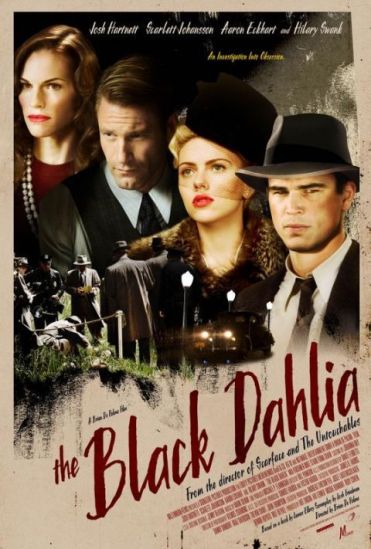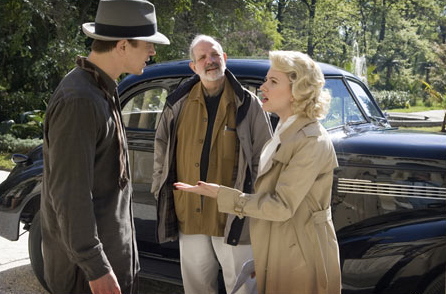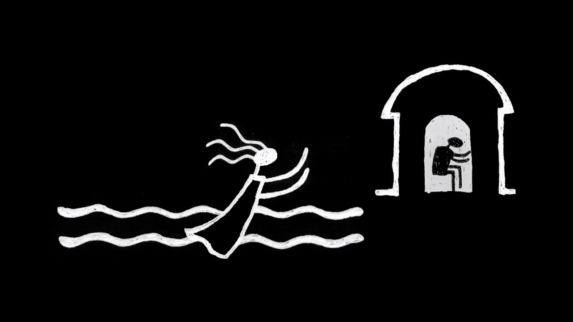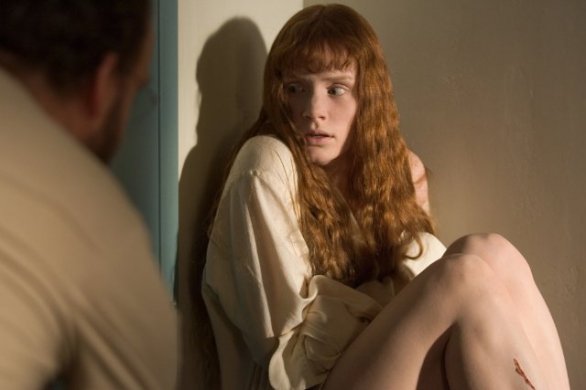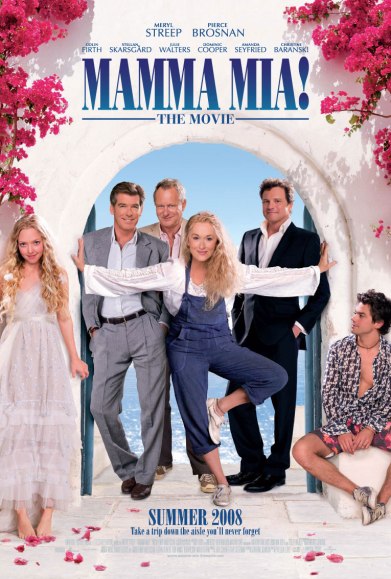As much as I would love to, I don’t really have the money or the means to travel to Africa on the yearly basis in which I desire. I more often have the opportunity to visit New York which has a flourishing diaspora in every part of the city. You can dance highlife at The Shrine in Brooklyn, eat peanut soup in the Bronx and on Memorial Day weekend attend the Brooklyn Academy of Music’s African festival including a grand bazaar of vendors representing the continent abroad. You can buy print fabrics and shea butter by the pound, attend traditional dance classes and most importantly for me, the Rose Cinemas provides an African Film Festival. After walking through the blocked off streets, smelling the jerk chicken and trying not to buy anything that I would consider cultural appropriation, I strolled into the theater to enjoy a Memorial Day in the bushes of Senegal and the bustling city of Abuja.

The first half of the double feature was the 1997 Senegalese film TGV, a road comedy wherein the titular named bus travels with an array of passengers from Dakar to Conakry amidst a rebellion of the Bijago people. This is director Moussa Touré’s second film and most famous work which brilliantly captures the colorful West African landscape, the different class, religious and political systems permeating the time and addresses colonialism and European privilege in Africa. All this is accomplished with a light tone as we cheer on the lovable characters on board the rickety bus. There’s no Nollywood level hijinx but more low key real world scenarios with some mysticism thrown which is highly engrained in the culture. The perspective seems nearly all told from the vehicle as often that is the sightline for the travels but also inserts a neutral tone towards the sometimes hostile members. It’s a film that is equally accessible to West Africans as well as outsiders like myself looking for culturally rich cinema.
The film kicks off in a bustling transport hub in Dakar as optimistic bus driver Rambo (Makena Diop) and attendant Demba (Al Hamdou Traore) prepare for the usual trip through the bush. The passengers that range from a middle aged divorcee, two contentious mystics, a young beauty, a man on his way to marry his 5th bride and the ex finance minister and his wife which they meet on the way. We intimately get to know all these characters as they travel in the tight quarters of the well used bus that finds the most inopportune times to break down. It’s as dysfunctional as its faux family but one you learn to love. Touré shows all the facets of Senegalese society from the wealthy well dressed government official whose primary concern is the cleanliness of his suit to the poor old man who owes more people money than he would like. The spiritually endowed to the humanist few. From the proudly polygamist to those searching for true love. He’s covering many issues that concern the population but also what makes the nation so diverse. These characters must work cohesively to make it through the dangerous journey as they are threatened by these rebel forces. My favorite scene of the film on both a technical and script writing level is one of the many times the TGV breaks down all the passengers must push through the rough terrain to the next village. In a single take the camera swivels around to each side of the bus, eavesdropping on each conversation as they commiserate about the trip which they are all connected by.
The driving action besides the basics of getting from point A to point B is that of the Bijago rebel group which to my knowledge and brief wikipedia research is not a real conflict that Senegal or neighboring African countries experienced. They are stand ins for the general internal strife many West African countries have dealt with as underrepresented tribes often rise up to the government. Here it is over a sacred totem that has been removed from their lands and into a museum. This major subplot dives into all the colonialism issues that Touré makes sure to never come off as heavy handed. This totem was taken for tourism and anthropological reasons, something that benefits whites more than it does the Senegalese. This is all brought to the forefront when the bus picks up two lost French students working on their thesis that involves studying an ancient Mandingo leader. There is a hilarious back and forth as the entire bus decides whether or not the whites should be allowed on board, if they are worth the trouble they’ll most surely bring. The outsiders are welcomed into the group with hesitation but are able to provide a map that is some use on the journey. While the couple, Sylvia (Philippine Leroy-Beaulieu) and Roger (Bernard Giraudeau), believe they are in the country for beneficial reasons, the others remind them the French colonialism they resemble as they take what they need and leave, immune to the real perils of living in Africa. The couple have malaria pills and mosquito nets, a luxury not even the finance minister posses. Touré doesn’t demonize these foreigners but does play jokes at their expense to remind whites that they’re out of their element. To find one of the passengers missing goats, a mystic marabout sacrifices an animal and since there is no virgin to pour the blood on, they use the white woman instead.
The story comes to a head at an unexpected twist as the TGV has been steadily avoiding all Bijago camps, they are driven into a trap as one of the passengers is actually the leader of the rebel resistance. It’s a narrative tactic I didn’t expect but also doesn’t feel forced. It’s an exciting turn as it’s revealed that this was a plan to capture the finance minister who will soon be appointed Prime Minister but the whites prove more profitable as hostages. It segues into some more interesting conversations as the Senegalese coerce the French into stay behind because they’ll be saved with their European passports where the native Senegalese have less chance of making it to Dakar alive. I like the simplicity and eloquence in which all these ideas are expressed and the very positive light Touré wants to shine on his characters even if the Western world would consider them villains. The surprising Warlord is very rational with his decision of hostages and isn’t looking for a bloodbath, he just knows this is the kind of drastic message he must make for his people to be heard. There is a great scene earlier as the bus has stopped for the night and the French discuss how shocked they were by seeing a dead man on the road. The rebel pontificates how Africans see death everyday caused by poverty and disease. His speech is interrupted by the divorcee noting that the only dead body she’d ever seen was her father’s. The film doesn’t want to lump the African experience as singular, something most Westerners do when they imagine the goings on of the continent.
TGV is an amazing piece of independent African cinema. Like most world cinema you’re hoping for a unique perspective, culturally significant story and a signature voice, something that American mainstream cinema doesn’t offer. It’s a shame there wasn’t more to come from Touré, for whatever reason that may be. In 2002, he set up a documentary film festival in Rufisque to showcase rising African documentarians which makes sense as TGV is about showcasing these diverse perspectives from all walks of life. He’s obviously invested in expressing the wealth of African storytelling as two visions are never alike. You leave TGV having enjoyed a fantastic story, more knowledgeable about the culture (marabout was a new word for me) and get to marvel in the beauty that is the West African landscape. That’s the most I can ask for from African cinema.

The second feature in this line up was the 2015 Nollywood film, Head Gone. I’m not going to sugar coat it, Nollywood is terrible. I had this hope that since this was a film playing a real film festival that it would have some merit. Maybe this was a hidden indie Nigerian film as good as TGV. Sadly, I realized as the cheesy production company logos appeared on screen, I was in for the usually Nollywood schlock. As Nigeria has moved into the digital age, their movies improved with slightly more production value compared to when they were shot on VHS but none of the acting or storytelling has caught up with the advance. The loose plot is that of a bus full of mental patients driving to Abuja to be dropped off at a local hospital. When the driver and doctor get distracted on the journey, the patients escape and hijinx ensues. From this about ten plot threads diverge, none of them well developed or maintained through the run time. New characters are constantly being introduced and forgotten. It’s a movie that quickly spirals out of control and not in a good way.
I think this film is the anti TGV. They both start out similarly on a bus full of vivid character but where Touré uses subtle visual clues through someone’s dress and demeanor to describe each person, Head Gone uses graphics and voice over to explain characters down to their age. Little nuance at all here but what makes it even worse is the graphic are riddled with spelling errors and inconsistent with format. Where TGV had a simple plot of needing to reach the planned destination, that is only the middle of this story as the plot later becomes the corruption of the staff of the asylum, the false imprisonment of sane civilians and the trouble the real patients cause on the streets of Abuja, the latter which is never resolved as most of the characters remain on the lamb. There’s no creative filmmaking here as it’s a success if the boom mic doesn’t appear in frame and everyone is playing it so over the top. I will give some credit to some select moments of physical comedy but most of it is just silly faces and fat men dancing. There’s even a nurse that is straight out of a Nicole Byer impression. I felt very guilty watching this because I might be racially insensitive for just seeing it. I wanted the fueled political commentary Touré provided with satire but all that is given here is corruption is bad delivered with the enthusiasm of a dead fish.
I understand what Nollywood movies are. They’re made on the cheap, intended to reach the widest demographic as possible specifically appealing to a West African audience. This is not a movie interested in what me a white middle class American woman wants from a movie. I get that, which is why I often avoid these because I find them arduous, pointless and often sexist (women are mostly sex objects unless you’re an idiot nurse). I’m more frustrated at BAM’s programming that it lulled me in with a fantastic film like TGV that is insightful, well made, speaks to both a Western and African audiences very intelligently and using comedy, brings up interesting conversations concerning both parties. I would expect an equally interesting film to follow it up, instead it’s your run of the mill trashy Nollywood flick. It’s got a star studded cast with many famous Afrobeat singers like 2Face, Baba Dee and Sound Sultan which is the only the aspect setting it apart. I rather just recommend those artists music! I assume BAM chose Head Gone to inform white audiences what Nigerian cinema is or maybe it was for the handful of Africans attending the screening who hopefully enjoyed it. Nollywood films are just such a endurance test for me. It’s fine to watch a funny scene here and there on youtube when you don’t have to tediously sit through over 90 minutes of incoherent plot. My enjoyment of the accents and the Nigerian landscape can only stretch so far. I hate being negative especially to a country I love but this is a straight up bad movie.
